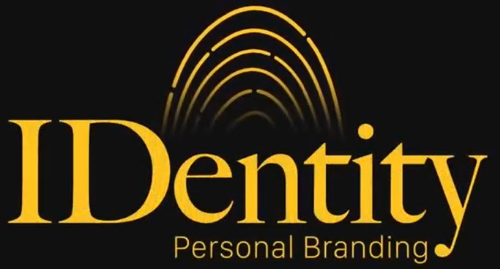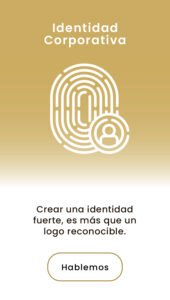Building upon the foundational insights presented in Divine Justice: How Ancient Symbols Inspire Modern Rewards, this article explores how these symbols have evolved from representations of societal or divine order into vital components shaping individual morality today. By examining the transformation and reinterpretation of ancient symbols, we gain a deeper understanding of their psychological, cultural, and social significance in contemporary ethics.
Table of Contents
- From Divine Justice to Personal Morality: The Evolution of Symbolic Interpretations
- The Psychological Power of Ancient Symbols in Modern Ethical Development
- Reinterpreting Ancient Justice Symbols for Contemporary Social Justice Movements
- Cross-Cultural Perspectives: Universal Symbols of Justice and Morality Today
- The Ethical Implications of Symbolic Revival in Modern Society
- From Symbols to Actions: Transforming Moral Inspiration into Contemporary Justice Practices
- Bridging the Gap: Returning to Divine Justice through Symbolic Reflection in Modern Morality
1. From Divine Justice to Personal Morality: The Evolution of Symbolic Interpretations
Ancient symbols of justice, such as the scales of Ma’at in Egypt or the balanced sword of the Greek goddess Themis, initially represented societal and divine order. Over time, these symbols transitioned from serving exclusive societal functions to becoming internalized within individual moral frameworks. This shift was driven by the decline of centralized divine authority and the rise of personal moral responsibility, especially during the Enlightenment era, which emphasized rationality and individual conscience.
For instance, the Greek concept of dikaiosyne (justice) evolved from divine decree to a moral ideal that individuals internalize as part of their ethical identities. Personal interpretations of symbols like the scales or the blindfolded Lady Justice have empowered individuals to see morality as a personal pursuit rather than solely a societal mandate, fostering autonomous moral judgment.
Case Study: The modern use of the justice scale in legal systems symbolizes the balance of fairness. Yet, beyond law, it also reflects an internal moral compass—encouraging individuals to weigh their actions against universal principles of fairness and equity, thus becoming a personal moral anchor in everyday decision-making.
2. The Psychological Power of Ancient Symbols in Modern Ethical Development
a. How do symbols evoke subconscious moral responses?
Research in cognitive psychology indicates that symbols activate deep-seated moral schemas stored in the subconscious. For example, the image of a balanced scale can trigger innate notions of fairness and justice, even in individuals unfamiliar with its cultural origins. Such symbols serve as moral priming tools, subtly influencing judgments and behaviors without conscious awareness.
b. The impact of visual and ritualistic symbols on moral identity formation
Visual symbols like the blindfolded Lady Justice or ritualistic acts such as oath-taking in courts reinforce moral commitments and identity. Repeated exposure to these symbols through education or ritual helps embed moral values into personal identity, making ethical principles an integral part of one’s self-concept.
c. Neuroscientific insights into symbolic cognition and moral reasoning
Neuroscience reveals that regions such as the ventromedial prefrontal cortex are activated during moral judgment, especially when individuals are exposed to symbolic representations of justice. This suggests that symbols do more than communicate moral ideas—they engage neural pathways that underpin moral reasoning, making them powerful tools for ethical development.
3. Reinterpreting Ancient Justice Symbols for Contemporary Social Justice Movements
Modern social justice movements often adopt ancient symbols, recontextualizing them to serve current causes. For example, the scales of justice are now widely used in campaigns advocating for racial equality, economic justice, and environmental sustainability. This reinterpretation breathes new life into ancient symbols, aligning them with pressing moral issues.
The process of reinterpretation is vital for moral progress. It allows symbols to transcend their original cultural contexts and address contemporary injustices, fostering a sense of shared moral responsibility across diverse communities.
| Symbol | Modern Cause | Interpretation |
|---|---|---|
| Scales of Justice | Racial Equality, Environmental Justice | Representing fairness in diverse contexts |
| Blindfold | Impartiality in Legal and Social Justice | Conveys unbiased moral judgment |
| Sword | Law Enforcement, Moral Courage | Symbolizes enforcement and moral strength |
4. Cross-Cultural Perspectives: Universal Symbols of Justice and Morality Today
Certain symbols of justice, such as the scales and the blindfold, appear across multiple cultures, suggesting a shared human conceptualization of fairness. For example, the Chinese concept of Yin-Yang embodies balance and harmony, fundamental to moral reasoning in East Asian traditions.
Different cultures reinterpret these symbols within their unique moral systems. In India, the goddess Durga, wielding a sword and scales, embodies the moral strength needed to combat injustice. Such cross-cultural reinterpretations enrich the global moral landscape, fostering dialogue and mutual understanding.
«Symbols of justice serve as universal language, yet their interpretations are deeply rooted in cultural contexts—creating a rich tapestry of moral understanding worldwide.»
5. The Ethical Implications of Symbolic Revival in Modern Society
Reviving ancient symbols for moral purposes offers significant benefits, including reinforcing shared values and inspiring action. However, it also carries risks, such as cultural appropriation or superficial reappropriation that dilutes original meanings.
The authenticity of symbols influences their moral authority. When symbols are genuinely rooted in cultural or spiritual traditions, they tend to resonate more deeply and foster genuine moral engagement. Conversely, commodified or superficial symbols risk undermining moral integrity.
Achieving a balance between maintaining tradition and innovating for contemporary relevance is crucial. Respectful reinterpretation can invigorate moral narratives without eroding their original significance.
6. From Symbols to Actions: Transforming Moral Inspiration into Contemporary Justice Practices
Ancient symbols can motivate tangible social justice initiatives. For example, the image of Lady Justice has inspired countless campaigns for legal reform and anti-corruption efforts worldwide.
Education and media play vital roles in propagating these symbolic narratives, transforming abstract ideals into actionable goals. Visual campaigns, documentaries, and school curricula that incorporate these symbols deepen moral understanding and motivate community engagement.
Case Example: The Black Lives Matter movement frequently employs scales and the image of justice to symbolize systemic inequities, illustrating how symbols can galvanize collective action and policy change.
7. Bridging the Gap: Returning to Divine Justice through Symbolic Reflection in Modern Morality
Modern interpretations of ancient symbols often serve as bridges connecting us back to divine justice principles. For instance, the concept of moral balance reflects divine notions of cosmic order, emphasizing harmony and righteousness.
Spiritual and moral alignment is essential in contemporary ethics—symbols act as visual and ritual reminders of higher principles that guide personal and societal behavior. Reintegrating these symbols into daily life fosters a sense of moral purpose rooted in divine justice.
Future Directions: As society evolves, symbols should be adapted thoughtfully to reflect new moral challenges while retaining their connection to divine justice, ensuring their relevance and potency in fostering moral resilience amid change.

